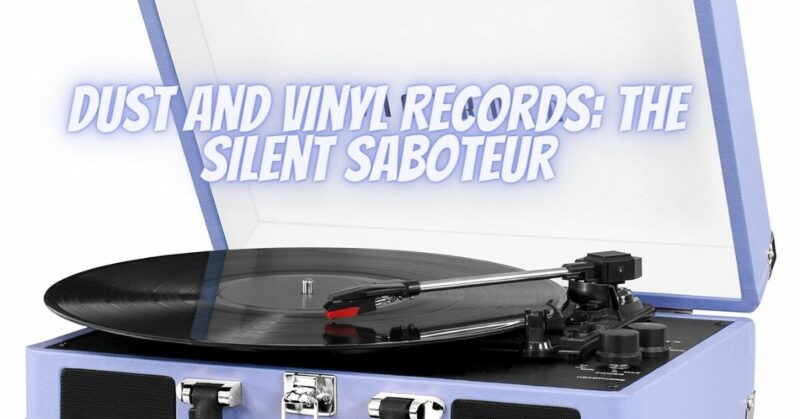Vinyl records, with their analog warmth and iconic grooves, are cherished by audiophiles and music enthusiasts worldwide. However, these analog treasures are not immune to the perils of dust and debris. In this article, we will explore the effects of dust on vinyl records and why it’s essential to keep your vinyl collection clean.
- Audible Consequences
Dust and debris on vinyl records can have noticeable effects on the listening experience. When a stylus traverses a dusty groove, it can produce audible crackles, pops, and static noise. These unwanted artifacts can disrupt the enjoyment of music and diminish the overall audio quality.
- Tracking Problems
Dust particles on the surface of a vinyl record can create tracking problems for the turntable’s stylus. The stylus may struggle to maintain proper contact with the groove, resulting in skipped or mistracked sections of the music. This not only degrades the listening experience but can also potentially damage the stylus or the record itself.
- Groove Damage
Over time, dust particles can act as abrasives and cause physical damage to the delicate grooves of vinyl records. The stylus, in its attempt to navigate through dusty terrain, may wear down the grooves and reduce the overall lifespan of the record. This can result in a permanent loss of audio fidelity.
- Tonearm and Cartridge Wear
Dust and debris can also affect the turntable’s tonearm and cartridge. When these components come into contact with contaminants, they may accumulate wear and tear. This can lead to alignment issues, misalignment of the cartridge, and degraded performance.
- Static Electricity
Dust can contribute to the buildup of static electricity on the surface of vinyl records. Static charges can attract more dust, making records even dirtier over time. Additionally, static can cause the stylus to jump or skip, further disrupting playback.
- Warped Records
While not directly caused by dust, the accumulation of dirt and debris can contribute to the warping of vinyl records. When records are stored improperly, with dust and contaminants trapped between them, uneven pressure can cause warping.
- Loss of Sound Quality
The cumulative effects of dust, including increased surface noise, tracking issues, and groove damage, ultimately lead to a loss of sound quality. Records that are not regularly cleaned and maintained may sound noticeably inferior to their clean counterparts.
Prevention and Maintenance
To preserve the sound quality and longevity of your vinyl records, regular cleaning and maintenance are essential. Here are some tips:
- Use a Carbon Fiber Brush: Gently brush the surface of your records with a carbon fiber brush before each play to remove loose dust and debris.
- Invest in a Record Cleaning Machine: Consider using a record cleaning machine, which provides a more thorough and effective cleaning process.
- Store Records Properly: Store records vertically in clean, anti-static inner and outer sleeves, and keep them in a cool, dry environment away from direct sunlight.
- Handle with Care: Always handle records by their edges and avoid touching the playing surface.
- Regularly Clean Your Turntable: Keep your turntable and stylus clean and well-maintained to minimize dust transfer from components to your records.
Conclusion
Dust may be a silent saboteur of vinyl records, but its impact on audio quality and record longevity is undeniable. To fully appreciate the analog warmth and fidelity of vinyl, regular cleaning and proper maintenance of your record collection are crucial. By taking these steps, you can ensure that your vinyl records continue to provide a pristine listening experience for years to come.


